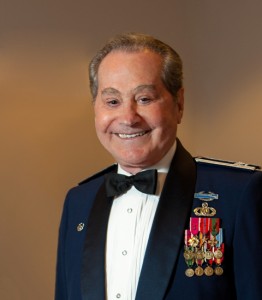Music Celebrations International is pleased to present the Sousa Band Festival, an exclusive event that will take place on Saturday and Sunday, April 2-3, 2016, at the Concert Hall of the John F. Kennedy Center for the Performing Arts in Washington, D.C. Four select concert bands will be featured in performance at this historic concert venue. The program will emphasize the life and influence of John Philip Sousa, “The March King,” on the American Band movement. Participating bands will have the opportunity to visit important Sousa sites in Washington, D.C., including Historic Congressional Cemetery, where he was laid to rest. Each band will also take part in a clinic with the renowned Colonel Arnald D. Gabriel, retired conductor of the United States Air Force Band. 
Sousa began his musical career at age 6, when he first learned the violin. When the young Sousa turned 13, his father, a trombonist in the United States Marine Band, enlisted his son in the Marine Corps as an apprentice. Sousa served his apprenticeship for seven years, until 1875, and learned to play all the wind instruments while honing his mettle with the violin. Several years later, Sousa left his apprenticeship to join a theater orchestra where he learned to conduct. Founded in 1798, the oldest professional music organization in the United States is the United States Marine Band. For all its rich history and traditions, it is probably best known as being led by Sousa from 1880 to 1892. These years started a very long and prolific period of march composition for Sousa, including legendary marches that are still performed today – The Washington Post, The Gladiator, and of course, The Stars and Stripes Forever. Semper Fidelis, in addition to being the motto of the United States Marine Corps, is also the title of the official march of the Corps, composed by Sousa in 1889. The John F. Kennedy Center for the Performing Arts is a world-renowned arts complex on the Potomac River in Washington, D.C. It opened in 1971 as a living memorial to the 35th President of the United States, John Fitzgerald Kennedy. Designed by architect Edward Durrell Stone, it was built by Philadelphia contractor John McShain and is administered by a bureau of the Smithsonian Institution. It is often referred to as the “National Center for the Performing Arts,” serving as the home of the National Symphony, Washington Ballet, Washington National Opera, and the Washington Performing Arts Society. Thousands of art performances are given annually on the various stages and theaters that exist within the structure.
Founded in 1798, the oldest professional music organization in the United States is the United States Marine Band. For all its rich history and traditions, it is probably best known as being led by Sousa from 1880 to 1892. These years started a very long and prolific period of march composition for Sousa, including legendary marches that are still performed today – The Washington Post, The Gladiator, and of course, The Stars and Stripes Forever. Semper Fidelis, in addition to being the motto of the United States Marine Corps, is also the title of the official march of the Corps, composed by Sousa in 1889. The John F. Kennedy Center for the Performing Arts is a world-renowned arts complex on the Potomac River in Washington, D.C. It opened in 1971 as a living memorial to the 35th President of the United States, John Fitzgerald Kennedy. Designed by architect Edward Durrell Stone, it was built by Philadelphia contractor John McShain and is administered by a bureau of the Smithsonian Institution. It is often referred to as the “National Center for the Performing Arts,” serving as the home of the National Symphony, Washington Ballet, Washington National Opera, and the Washington Performing Arts Society. Thousands of art performances are given annually on the various stages and theaters that exist within the structure.



